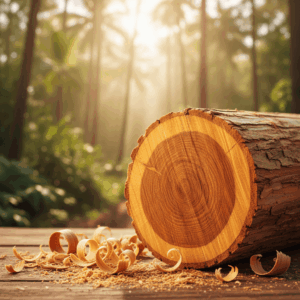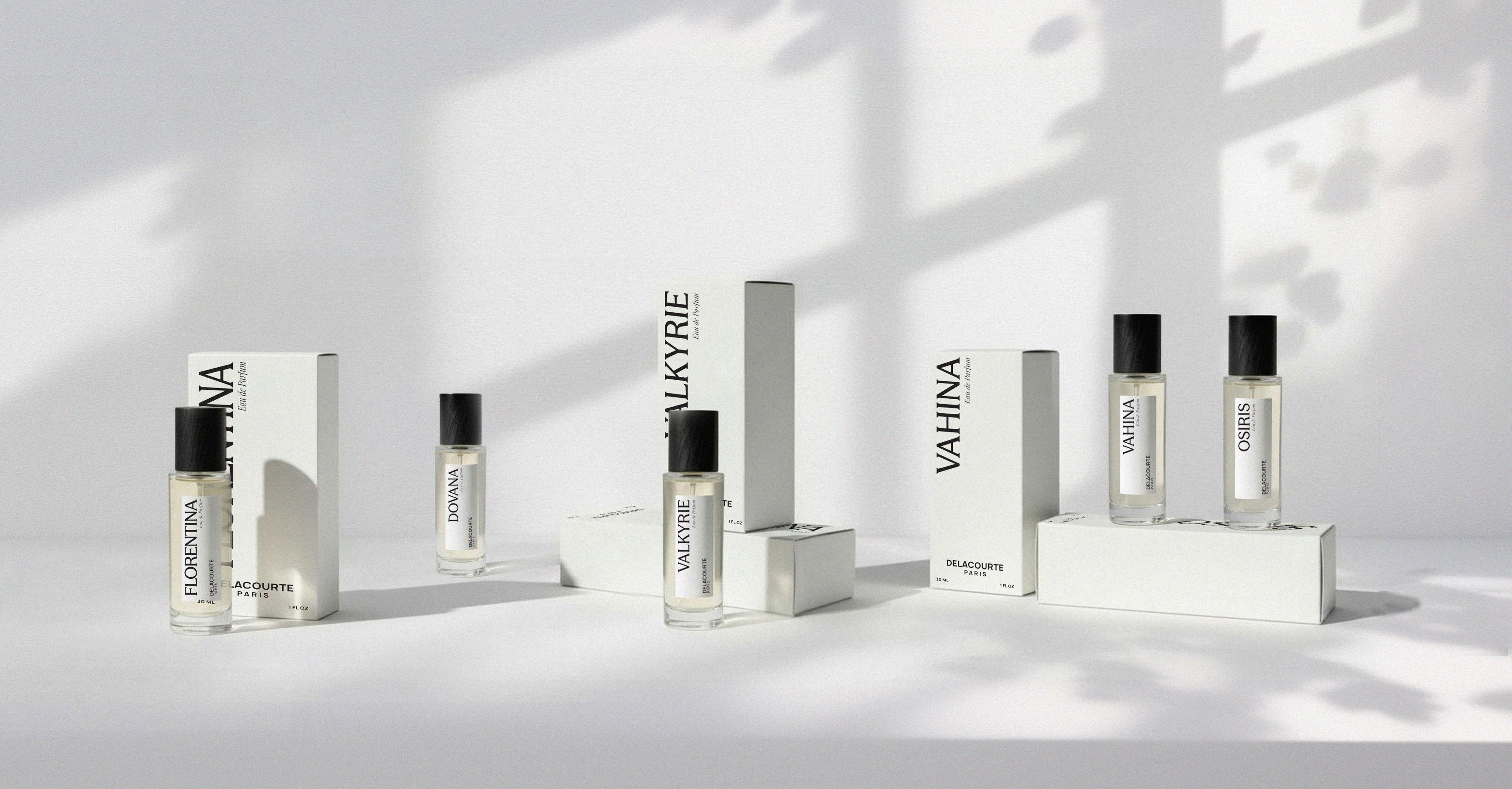Sandalwood is now one of the rarest and most expensive woods in the world. Revered since ancient times in religious rituals, it has inspired deep devotion. This passion has led to its scarcity and, in some areas, the risk of extinction.

Botanical name: Santalum Album, Austrocaledonicum, Spicatum
Botanical family: Santalaceae
Origins of sandalwood
Originally from Asia, especially India and Indonesia, sandalwood has been used since the 15th century.
This small tree, reaching 5 to 12 meters in height, has light green oval leaves and small straw-yellow flowers. Its reddish-brown trunk is often covered in lichen and reaches 50 cm in circumference at harvest time.
It produces a fleshy fruit — the drupe — whose pulp attracts birds. These birds naturally spread the species by ingesting and dispersing the seeds.
Sandalwood is a hemiparasitic plant. During the first 10 years, its roots cannot absorb water and minerals on their own. Instead, it feeds through haustoria on the roots of nearby trees such as faux guaiac or guava trees. Fragile and light-sensitive, it grows in the shade of its hosts.
Sandalwood is only harvested after 30 to 50 years, when its fragrance has fully matured.
Traditional uses of sandalwood
Sandalwood has been used since ancient Egypt, particularly for embalming. It is traditionally burned in religious ceremonies, including cremations (up to 400 kg per cremation). In Buddhism and Hinduism, sandalwood is sacred — its smoke is believed to elevate the soul and enhance meditation.
It was once used to build temples, and also to make boxes, chests, and decorative items that resisted insects thanks to its scent. It’s also used in Ayurvedic and Chinese medicine for digestive and skin disorders. As an essential oil, it’s valued for its aphrodisiac properties.
In India, sandalwood paste is used to draw a Tilaka on the forehead during rituals or to honor Krishna. It also perfumes chewing tobacco.
Sandalwood: a precious and endangered wood
Sandalwood has deep roots in India. In the late 18th century, the king of Mysore declared it a royal monopoly. In 1916, a state-run sandalwood distillery was created. Mysore sandalwood remained the global benchmark throughout the 20th century.
But poverty fueled a large black market, leading to resource depletion. In 2010, India banned sandalwood harvesting. Its production is now tightly regulated, with limited exports.
Sandalwood is now cultivated in Australia (Santal Spicatum, lower quality) and New Caledonia (Santalum Austrocaledonicum, similar to Alba), which offers very high-grade sandalwood.
Sandalwood molecules
Many synthetic sandalwood molecules exist. While they don’t replace natural sandalwood, they help boost its diffusion. Examples include:
- Polysantol
- Sandalore
- Sandella
- Ébanol
Processing and extraction
The wood is dried and chipped before being steam distilled — a process that takes 2 to 5 days. The fragrance is concentrated in the heartwood.
In New Caledonia, sustainable harvesting is implemented. Core samples are taken to assess scent quality before felling. Nurseries ensure continuous replanting.
A French company specializing in natural raw materials has developed a cold extraction process to obtain exceptional quality essential oil.
Since 2010, the solar distillery on the island of Maré has made the process faster and more eco-friendly: just 8 hours instead of 3 days, producing three times more oil.
Scent profile of sandalwood
Sandalwood has a soft, woody, feminine scent with incredible longevity. It is creamy, velvety, powdery, balsamic, milky, warm, refined, sensual, and slightly leathery and animalic. Its low volatility means it diffuses gently but lingers like a musky note.
Nothing fully replaces natural sandalwood (cf. natural vs. synthetic), although synthetics can enhance it.
Main constituents
Sandalwood contains over 230 molecules, but only a few are aromatic. Today, we can fractionate the wood to keep only the most interesting ones. The key components include:
- Santalol
- Terpenes
- Beta-caryophyllene
- Santalines
- Bergamotol
High-quality sandalwood should contain at least 90% santalol.
Sandalwood in perfumery
Initially used in men’s fragrances, sandalwood is now widely used in women’s perfumes. It enriches woody and powdery notes (cf. powdery notes), and appears in oriental, fougère and floral families like iris.
It also enhances citrus-based perfumes with unexpected roundness. While many brands claim to include sandalwood, few capture its true essence, as its diffusion is very subtle.
Perfumes featuring sandalwood
- Samsara, Mouchoir de Monsieur, Jicky, L’Instant, Instant Magic – Guerlain
- Féminité du Bois – Serge Lutens
- Bois Farine – L’Artisan Parfumeur
- N°5, N°22, Allure – Chanel
- Sensuous – Estée Lauder
- A*Men – Mugler
- Paloma – Picasso
- Envy Me – Gucci
- Santal de Mysore, Santal Blanc, Santal Majuscule – Serge Lutens
- Santal Blush – Tom Ford
- Tam Dao – Diptyque
- Santal 33 – Le Labo
- Santal Massoïa – Hermès
- Mojave Ghost – Byredo
- Santal DanSha – Armani
- Santal Blond – Atelier Materi
- Santal Musc – Narciso Rodriguez
- Santal Pao Rosa – Guerlain
- Santal Blanc – Van Cleef
- Valkyrie – Delacourte Paris
